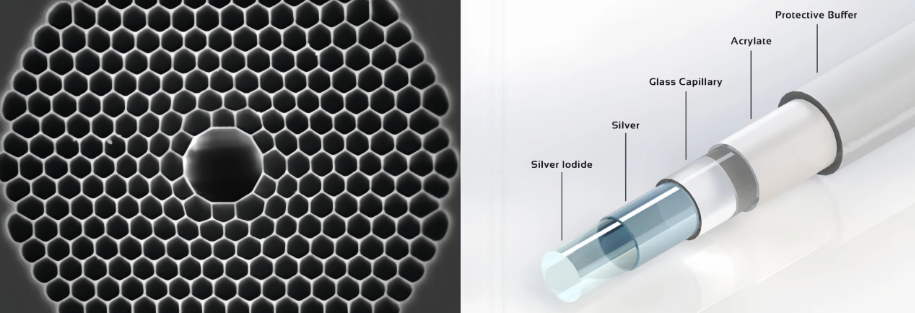Optical transmission hardware integration one-stop service provider
Views: 5 Author: Judy Publish Time: 2025-08-27 Origin: Site
The high-speed pulse of the information age is powered by a critical "neural network" – optical fiber. Traditional fibers, made of solid glass, work by trapping light inside a glass core using total internal reflection. However, a disruptive technology is quietly changing the game: Hollow-Core Fiber (HCF).
As the name suggests, the center of a hollow-core fiber is empty. Its fundamental difference from traditional solid fiber lies in one key fact: light travels not through glass, but through air. On a microscopic level, this fiber features a complex glass tube structure surrounding a central air channel. This structure acts as a "photonic barrier," guiding and confining the light to travel within this air-filled core.

The advantages of hollow-core fiber stem from its unique working principle, leading to three core breakthroughs:
Ultimate Speed, Lower Latency: Light travels approximately 50% faster in air than in glass. This translates to a significant reduction in the time it takes for data to travel through hollow-core fiber, which is revolutionary for fields with zero tolerance for delay, such as financial trading and supercomputer interconnection.
Ultra-Low Loss, Longer Distances: Glass inherently absorbs and scatters light signals, causing them to weaken (attenuation). In hollow-core fiber, the interaction between light and the glass material is minimized, drastically reducing transmission loss. This paves the way for data to travel much longer distances without needing signal amplifiers.
Greater Resilience, Less Interference: Environmental factors like temperature changes and radiation can affect the performance of traditional fibers. Since light primarily travels through air, hollow-core fiber is much less sensitive to these external disturbances, offering superior stability.
Although currently more expensive and complex to manufacture, the immense potential of hollow-core fiber is clear. It is not only a foundational technology for next-generation ultra-high-speed communication networks but is also expected to play a key role in high-end scientific instruments, laser processing systems, and quantum communication. It is set to open the door to a new era of faster, more stable, and highly efficient all-optical connectivity.
In summary, hollow-core fiber isn't just about making a fiber "hollow"; it represents a paradigm shift from a "glass highway" to an "air expressway." It is carrying us toward a future connected at the speed of light.